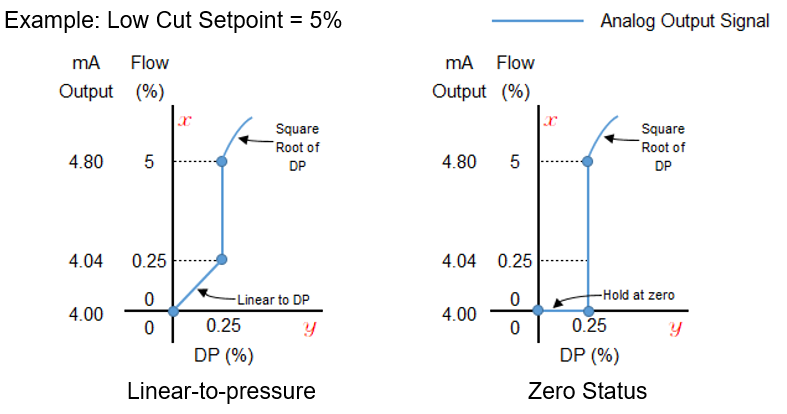Resources:
Pressure - Low Cut Output Signal
With some applications, the output signal can be erratic as the input nears the zero point. One of the most common applications with this issue is differential pressure flow measurement. A differential pressure (DP) transmitter can be placed across many types of primary flow elements like orifice plates, Verabar, or Accelabar to measure flow. These devices create a pressure drop; according to Bernoulli’s equation, the square root of that pressure drop is proportional to flow.
The problem is that the square root function has exceptionally high gain at low flow rates leading to significant output changes. (At the low end, low changes in actual flow translate to substantial changes in output.) This high gain amplifies any inherent noise or changes in flow rate leading to pressure transmitter output instability. Host control systems can experience difficulty controlling flow rate based on this highly fluctuating signal. Yokogawa DP transmitters have a signal-conditioning feature to eliminate instability at low flow rates.
Output Signal - Low Cut Mode
An output signal low cut mode features a user-programmable transmitter output setpoint to change the output to a linear-to-pressure (Linear) or zero (Zero) status. The output set point at which an output transition occurs is programmable from 0 to 20% of full-scale output. This feature is available on DP transmitters with an analog 4 to 20 mA or 1 to 5 Vdc output. The function applies to both the output signal and the display.

See attached FieldGuide FGP-195 Output Signal Low Cut for more detail.
Related Products & Solutions
-
Differential Pressure (DP) Flow
Simplify flow measurement with streamlined, cost-effective devices.
-
Differential Pressure Transmitters
Monitor and communicate pressure measurements with traditional mount or remote diaphragm seal mount transmitters.
-
EJA115E
Differential Pressure Flow Transmitter
-
EJX115A
Differential Pressure Flow Transmitter